
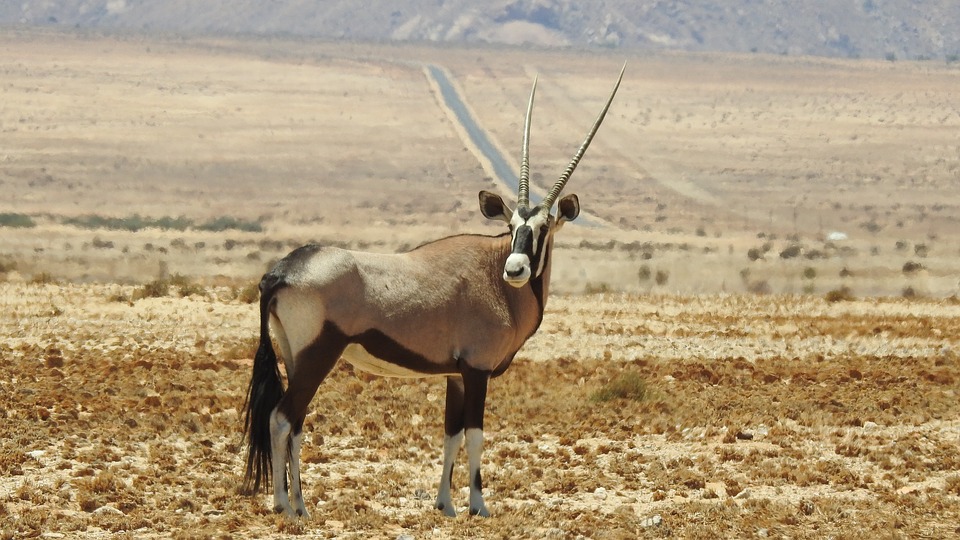
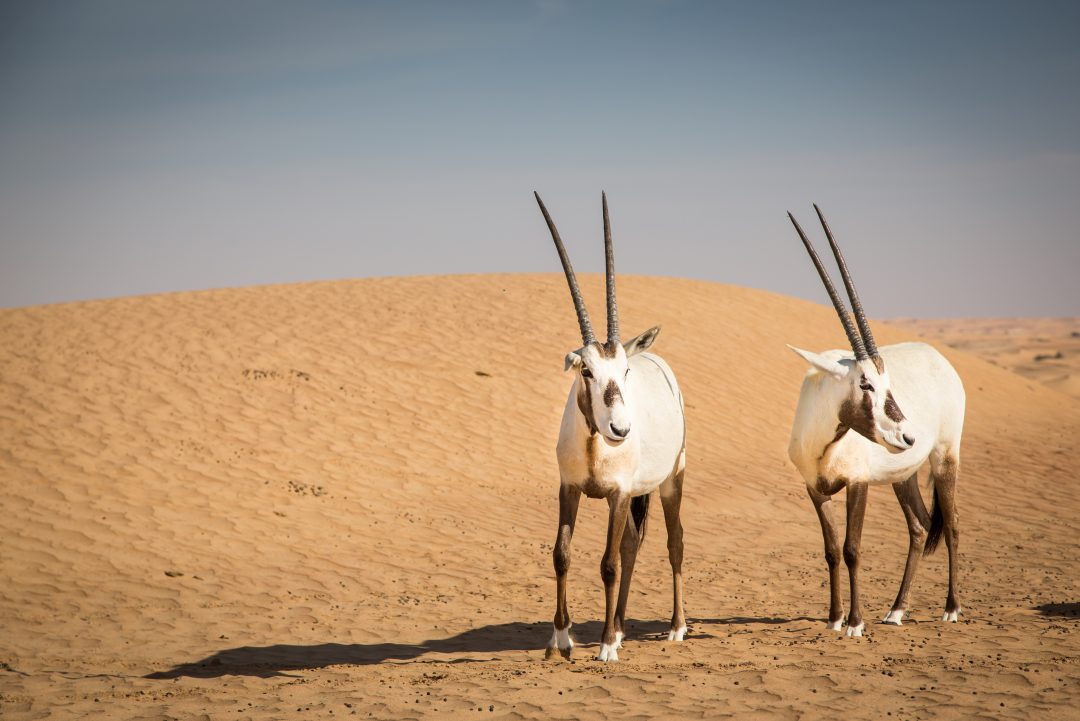
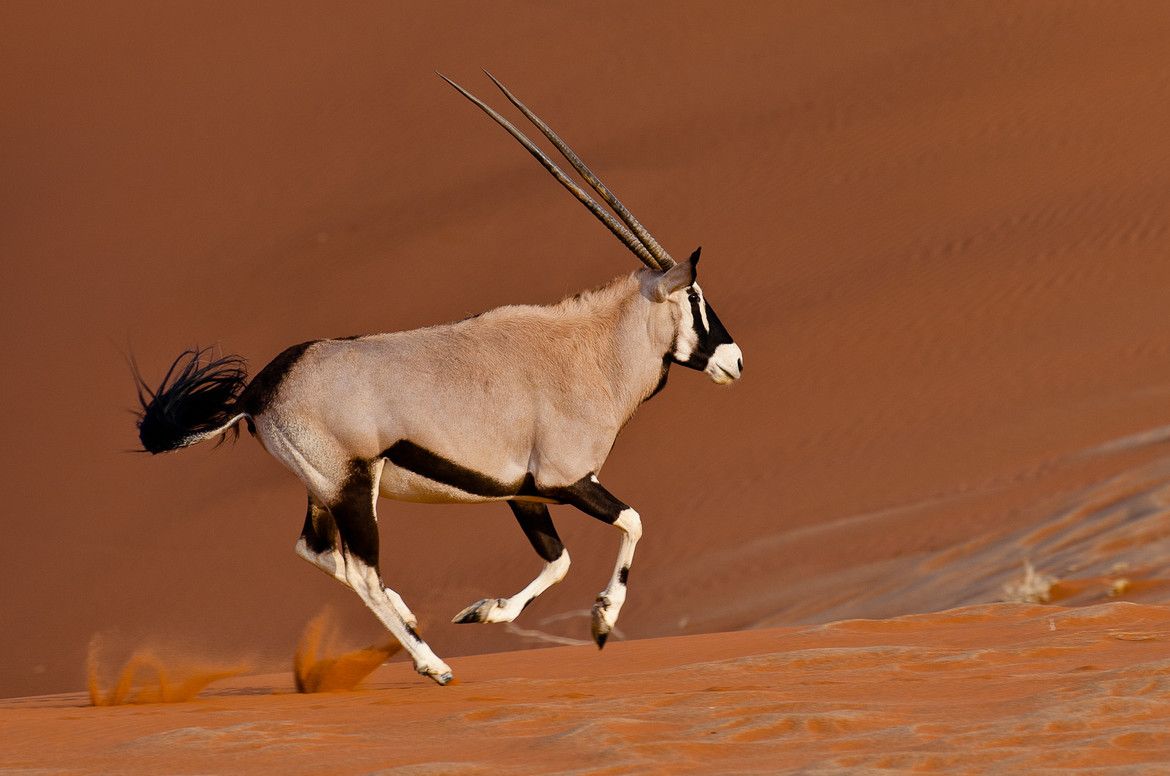
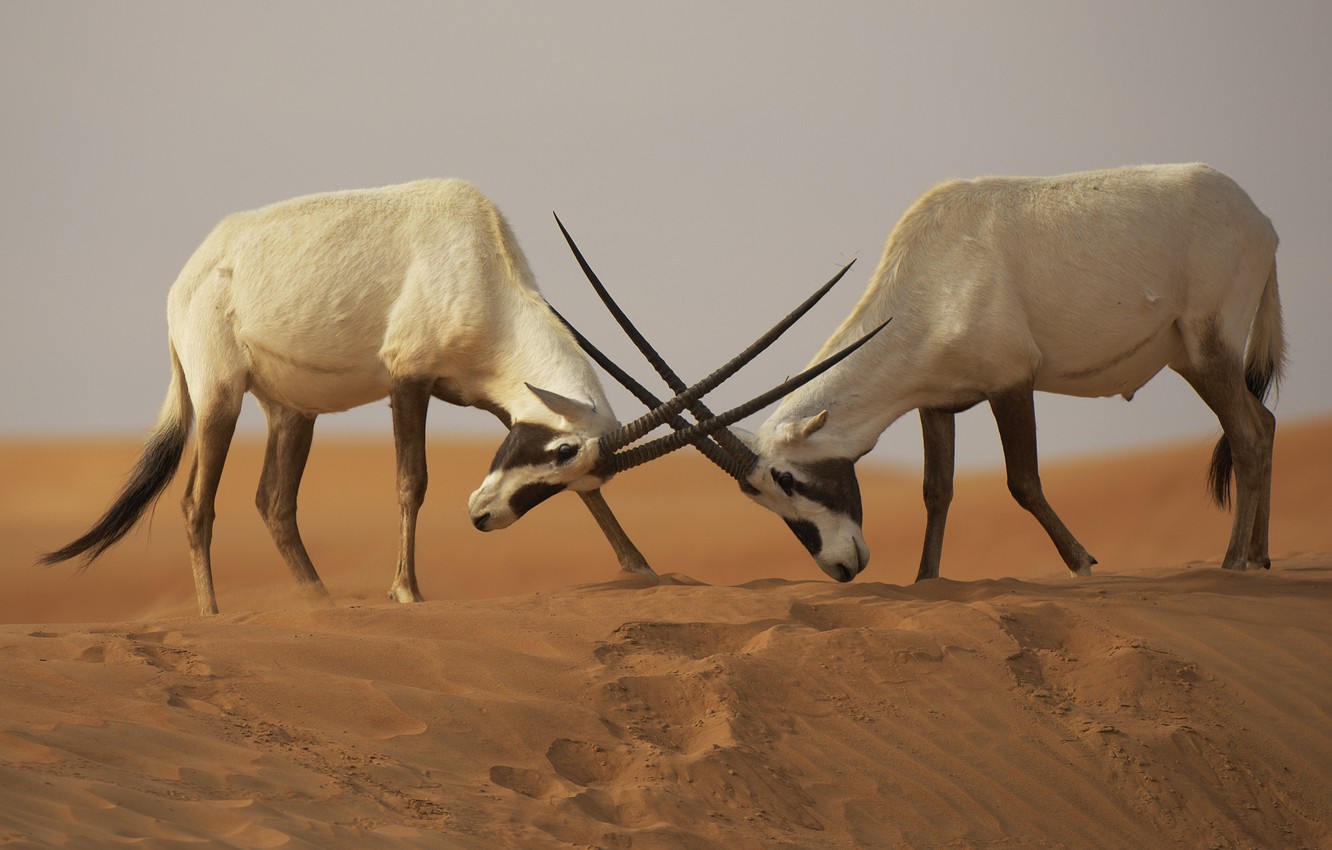
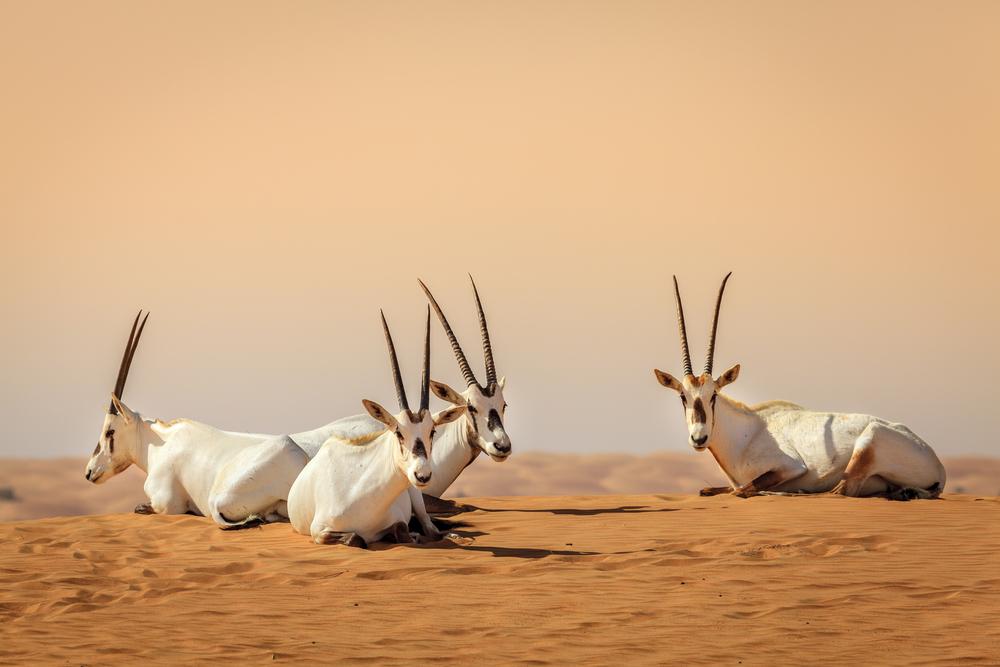
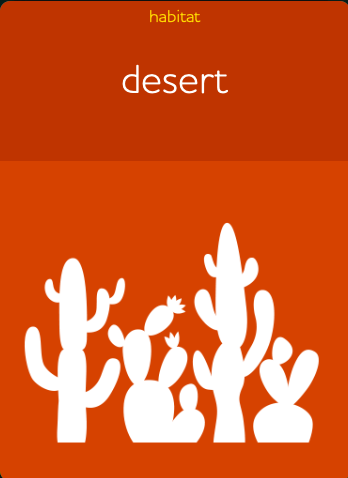 Arabian oryx live in a variety of desert habitats including stony plains, wadis and sand dunes. They are adapted to be able to survive harsh climates with low rainfall, high winds, temperatures of over 45 degree and even droughts of up to six months. |
 Arabian oryx eat grasses and roots, as well as roots and tubers. They can go a long time without drinking water. |

|
Also called the white oryx, this species of oryx is the best adapted for life in desert extremes. When it is hot, their white color reflects the desert heat and sunlight. On cold winter mornings, body heat is trapped in their thick undercoats in order and keeps them warm. In the winter their legs darken so they can absorb more heat from the sun. The circulation system in their heads help cool their blood, and that is another helpful adaptation for desert living.
Because of their hot climate, Arabian oryx are most active during early mornings and late in the evenings. During the day when it is the hottest, oryx dig shallow ditches in the ground with their front hooves, so they can lie in cooler sand. This also protects them from strong desert winds.
Both male and female Arabian oryx have long, straight or slightly curved horns on their heads. These horns can reach 30 inches in length!